


In modern construction, where timelines are strict and quality standards are non-negotiable, cement silo storage has become one of the most important systems supporting consistent and efficient concrete production. It ensures that the essential raw material — cement — is always available, well-preserved, and precisely delivered into every batch. Understanding how cement silo storage works and why it plays a critical role in modern concrete manufacturing is key to achieving stable production, better efficiency, and reliable concrete quality.
Cement silo storage refers to the use of sealed steel silos designed to hold bulk cement powder in a controlled, dry environment. A silo functions as both a storage vessel and a process component that integrates with batching and mixing systems. Its purpose is to maintain cement quality, provide a continuous supply, and support automated production.
Inside the silo, the cement is kept airtight to prevent moisture absorption, which could cause clumping and loss of strength. The system typically includes filters, level indicators, pressure relief valves, and pneumatic conveyors to move cement efficiently from the silo to the mixer. In short, a modern silo is not just a tank — it is a technological unit that guarantees the integrity of every batch of concrete.
=>SEE MORE: What is cement silo storage and why it matters in construction
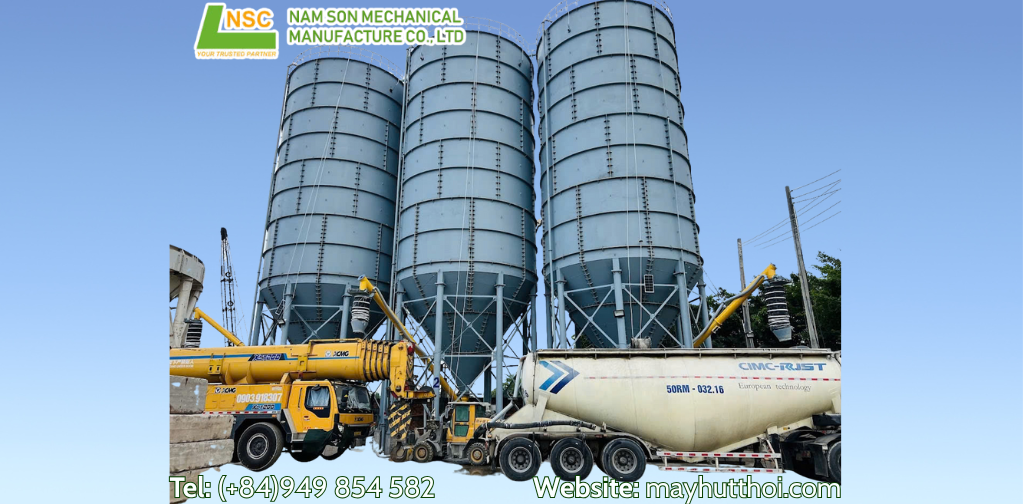
In every batching plant, one of the biggest challenges is maintaining a stable cement supply. Trucks can be delayed, weather can interrupt delivery, or logistics issues can occur. A cement silo storage system acts as a buffer, ensuring that production never stops. Even if transport is delayed, the plant can continue operating for hours or days because the silo holds sufficient reserve material. This constant supply directly prevents costly downtime and schedule disruption.
Cement is highly sensitive to moisture. Even small amounts of humidity can trigger chemical reactions that reduce its binding strength. The sealed design of cement silo storage keeps the cement dry, preventing contact with air, rain, or external contaminants. As a result, every kilogram discharged from the silo maintains its original chemical integrity and performance characteristics.
Concrete strength and durability depend heavily on the precision of cement dosing. Cement silo storage systems equipped with weighing sensors and automated feeding guarantee exact dosing for each mix. This automation minimizes human error, providing consistent water-cement ratios and uniform concrete performance. The outcome is predictable strength, better workability, and reduced risk of rejects or rework.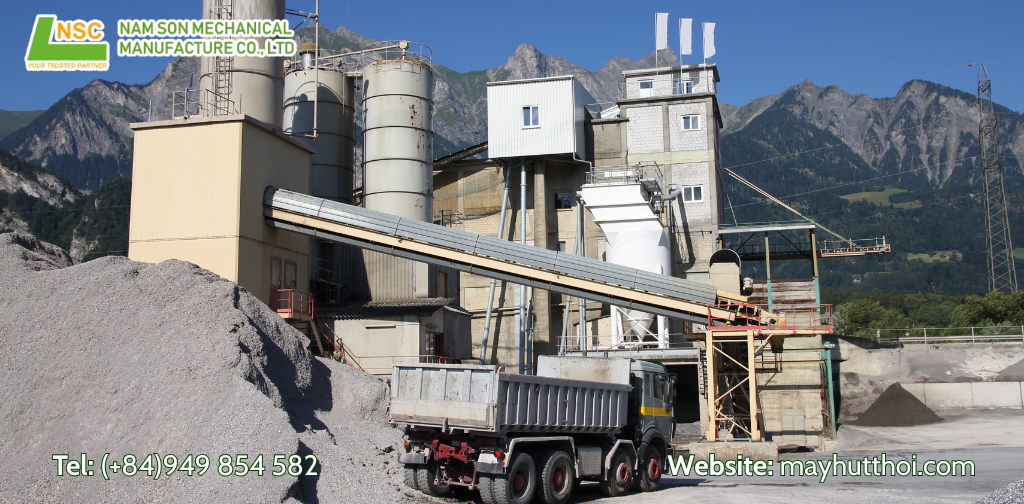
While all silos serve the same basic purpose — to store and preserve cement — they vary by structure, mobility, and level of automation. Understanding the right type helps a plant optimize both space and productivity.
Vertical silos are the most common form of cement silo storage in stationary plants. They are tall, gravity-fed, and occupy minimal floor space. Their height allows efficient discharge into conveyors or batching systems below. Because they are permanent installations, vertical silos are ideal for large-scale, continuous production.
Horizontal silos are shorter and easier to transport. They are preferred for temporary projects, mobile batching setups, or locations with height restrictions. These silos can be relocated quickly, offering flexibility without sacrificing storage capacity or protection.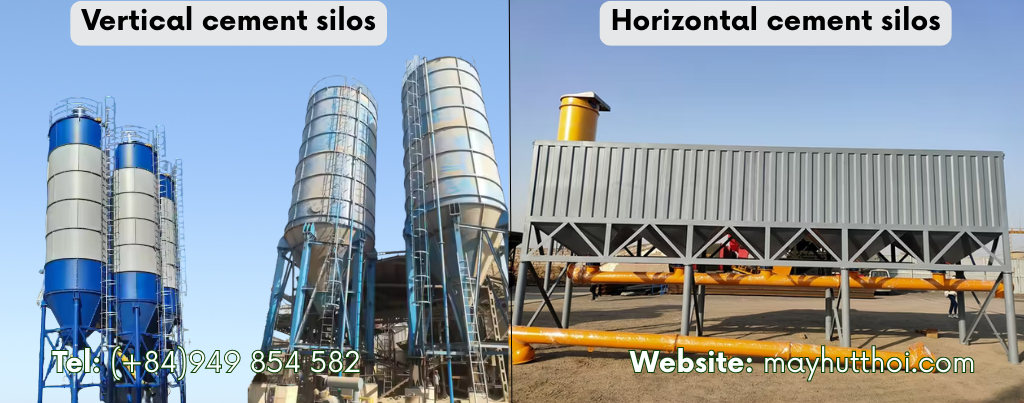
+ Stationary silos are built for long-term use and high-volume production.
+ Mobile silos are equipped with lifting legs and integrated conveyors, allowing rapid installation and relocation from one site to another.
Both configurations use similar safety and automation systems to maintain reliability.
.png)
Modern cement silo storage systems combine mechanical design with automation to improve accuracy and environmental compliance.
- Dust Collectors and Filters: Capture fine particles released during filling and discharging, ensuring clean operation and compliance with dust control regulations.
- Level Sensors: Provide real-time data on storage capacity, helping operators schedule refilling efficiently.
- Pressure Relief Valves: Prevent over-pressurization during pneumatic loading, protecting both the equipment and workers.
- Screw Conveyors or Pneumatic Conveyors: Transport cement from the silo to the mixer accurately, minimizing waste.
- Weighing Systems: Deliver precise dosing, essential for achieving consistent concrete mix ratios.
Together, these components transform a silo from simple storage into an intelligent system that contributes directly to operational control, cost savings, and product consistency.
=>SEE MORE: How to choose the right dry bulk cement silo for your project
Automated silo systems minimize labor needs, reduce spillage, and eliminate cement waste. Because the system operates in a closed loop, product loss is nearly zero. In addition, energy-efficient pneumatic conveyors cut power consumption during transfer.
The integration of sensors and weighing systems ensures each batch meets design specifications. Consistent cement quality translates into stronger, more durable concrete. For manufacturers supplying infrastructure or precast concrete, this reliability becomes a strong competitive advantage.
Properly designed cement silo storage systems include safety ladders, handrails, and controlled pressure systems. Automated filling reduces direct operator exposure to dust, creating a safer working environment.
Modern silos are equipped with high-efficiency filters that prevent dust emissions, helping plants comply with environmental standards. Reduced spillage also means less material waste and cleaner job sites — an important factor for companies aiming for green certification.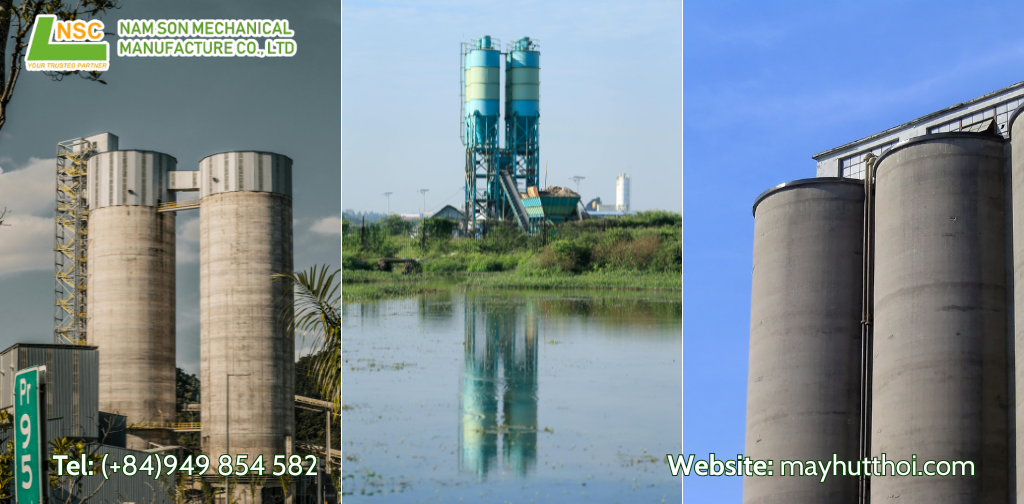
Even the most advanced silo requires regular maintenance to perform safely and efficiently. Essential tasks include:
~ Cleaning filters and venting systems to prevent blockages.
~ Inspecting level sensors, valves, and safety devices for proper operation.
~ Checking structural components for corrosion or wear.
~ Removing build-up or hardened material from interior walls to preserve capacity.
Preventive maintenance ensures uninterrupted operation, extends equipment life, and reduces the risk of unplanned shutdowns. For facilities handling hundreds of tons of cement, this reliability is critical.
Beyond its technical function, cement silo storage provides strategic benefits for the entire production chain. It allows concrete producers to plan with confidence, maintain a consistent supply during peak demand, and scale production efficiently. In competitive markets, where project deadlines and quality assurance define success, having a reliable silo system directly influences a company’s reputation and profitability.
Cement silos also integrate easily with digital monitoring platforms. Remote data tracking lets plant managers monitor inventory, schedule deliveries, and optimize production flow — turning traditional batching into a smart manufacturing process.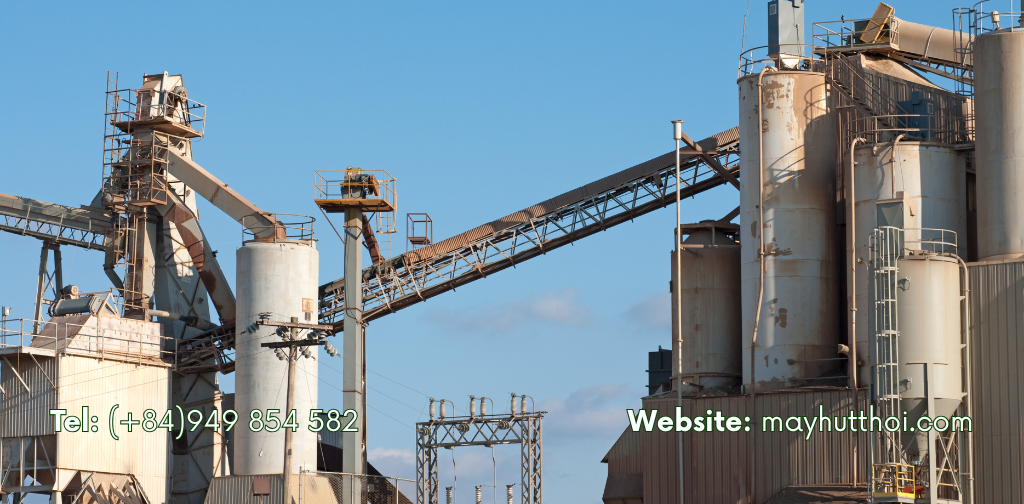
Cement silo storage is far more than a method of keeping cement dry. It is the operational backbone of modern concrete production — a system that guarantees continuous supply, quality consistency, and production efficiency.
By understanding what cement silo storage is and applying it correctly, manufacturers can:
* Maintain uninterrupted production even under logistical challenges
* Protect material quality and concrete strength
* Improve efficiency through automation and precise dosing
* Reduce labor and environmental costs
* Operate safely while meeting modern sustainability standards
In every aspect of today’s concrete industry, from ready-mix plants to infrastructure megaprojects, cement silo storage stands as a critical component enabling reliable, scalable, and future-ready concrete production.
Looking for a smarter, more efficient cement silo storage solution?
Contact us today to discover how our systems can improve your plant’s performance.
Website: mayhutthoi.com | namsonco.com
Alibaba: dthson.trustpass.alibaba.com
Facebook: facebook.com/NamSonPneumaticConveyor
Zalo/Whatsapp: (+84) 949854582
Email: mailan@namsonco.com | thanhson@namsonco.com
Copyright © 2016 Nhuamisa